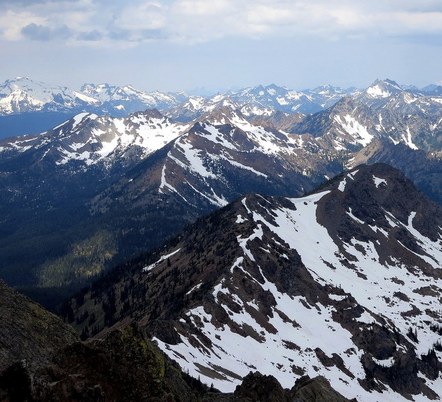Climbing Access & Stewardship Committee
Description
In order to protect access to our existing crag and alpine climbing areas and gain access to new spaces, The Mountaineers must manage our footprint and partner with other local organizations to engage in stewardship and advocacy. Recent regional and national successes such as the Vantage toilet, partnered trail projects, and the REC act serve as evidence that focused work, strong partnerships, and funding can achieve both public land protection and result in responsible access. The Access & Stewardship Committee (ASC) will be a group of representatives from each branch, facilitated by our Conservation and Advocacy Director, tasked with assessing and managing The Mountaineers’ footprint and partnering with local agencies and land managers to steward and protect our existing climbing areas and seek out new climbing areas.
Scope
The ASC will take inventory of our annual footprint in all climbing areas, particularly high-use climbing areas, and make recommendations to minimize our footprint where feasible. This may include a reduction in maximum party size in some of the most popular climbing areas. It may also include working with the Curriculum Committee to add low impact recreation training components where needed. The ASC will also work in partnership with land managers and organizations like Washington Climbers Coalition and the Access Fund to identify and execute on stewardship needs at our crags and alpine environments. The ASC will work to stay apprised of current issues in public lands in our region, poised to build a strong, informed coalition among our members and partners to protect the conservation of and access to our climbing areas. Additionally, the ASC will partner with organizations like the Access Fund and Washington Climbers Coalition to identify potential new climbing areas, work with land managers for access, and develop those areas with the human power of our climbing members.
Climbing Access & Stewardship Committee Membership
The Climbing Access & Stewardship Committee will be a group of 7-14 volunteers representing a variety of branches and committees and may include guest members from partner organizations in the climbing industry. During the first year, we’ll recruit 7 members to establish the committee and charter. The 7 initial members will recruit an additional 7 to join during year two. Each year thereafter, 7 members will roll off, leaving a spot for each branch to nominate a new representative on the ASC.
Qualifications:
- Leader status in climbing OR leader status in another Mountaineers activity plus extensive experience climbing
- Ability and desire to stay apprised of current local, regional and national access issues
- Commitment to safety
- Commitment to minimizing The Mountaineers’ impact on public lands
- Commitment to seeking out new educational facilities – both outdoor (crags) and indoor
- Commitment to caring for our climbing areas
Requirements:
- Membership is a 2-year commitment, approximately 1-3 hours per month plus some full-day visits with partner organizations
- Attend bi-monthly meetings (some in person, some remote)
- Liaison with your branch & committee(s), including ongoing two-way communication
- Provide leadership for climbing area access, development and stewardship events
- Provide leadership for advocacy campaigns
Timeline/Milestones
The Conservation and Advocacy Director will begin recruiting volunteers for the ASC in Winter 2017. The committee will meet bimonthly, and more often as needed when issues arise. The committee will take inventory of The Mountaineers’ footprint through spring and summer of 2017, including discovering the factors leading to Mountaineers’ high use in relevant areas, and will make recommendations for reducing our footprint in high use areas by fall of 2017. The ASC will then take annual inventory of our footprint to ensure our students and leaders are modeling a strong climbing ethic for the broader climbing community. In 2017, the ASC will also develop a plan for staying connected to issues around our existing climbing areas as well as a plan for assessing new climbing areas.
Expected Outcomes
We believe that by reducing our impact and protecting and expanding our access to public lands, we will ensure the necessary educational space is available to expand our capacity to reach more students. We will respond to increasing demand for these areas in partnership with land managers so that together we can ensure as many users as possible are educated in both safe climbing techniques and a strong climbing ethic to use the land responsibly and minimize impact.
Interested in serving on this committee? Fill out the form at the link below.
